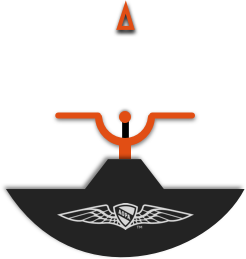What do you want to do?
You need...









Clear Skies Ahead
Acquiring the experience and knowledge to make the dream of flying for money a reality often takes lots of money, time and dedication. It can be done, though. Thousands of pilots who started flying in general aviation are now flying in a variety of careers, including the military, major and regional airlines, corporate aviation and agriculture—to name just a few.
Find what interests you and then pull the chocks to experience the elation of getting paid to do what you love.
See List of Careers →

Choose where to train
Whether you choose a flight school or academy, college or university, or the military, the initial training all private pilots receive is essentially the same. It is designed to teach you basic aviation skills and build your confidence and experience so you can pass the FAA knowledge test and successfully complete your checkride to earn your initial certificate. Be sure to do your research and choose the right setting for you.
Explore Your Options →Private Pilot training required for:

Private Pilot Certificate
Every aspiring pro pilot has to start somewhere and that somewhere is the private pilot certificate. To earn your first set of wings, you must be at least 17 years old, have a current third class medical or qualify for BasicMed, and have a minimum of 40 hours of flight time (the actual average is about 70 hours), including 20 hours of instruction and 10 solo hours. There are a few exceptions, but your instructor will guide you through the requirements as you develop the skills to earn your certificate.
Get the specifics →Private Pilot Certificate required for:





Instrument Rating
If you want to fly higher and farther in your career (especially in airline jobs), an instrument rating is essential. An instrument rating enables you to operate an aircraft in clouds and different weather conditions. It is the most common and logical step to take after gaining some experience while flying with a private pilot certificate.
Research the rules →Instrument Rating required for:

Commercial Pilot Certificate
Pilots who want to be paid to fly must meet specific requirements, starting with the commercial pilot certificate. The requirements vary slightly depending on the kind of flying you want to do and the aircraft you want to fly. But with each additional rating you add to your commercial certificate (instrument, multiengine, etc.), your career options and earning potential will grow.
Dig into the details →Commercial Pilot Certificate required for:

Multiengine Rating
A multiengine rating allows you to operate as pilot in command of an aircraft with more than one engine. Multiengine rated pilots are trained to handle the increase in speed, power and rate of ascent that these aircraft provide. Whether operating a twin-engine piston aircraft, turboprop, or jet, a multiengine rating will create more opportunities for you to build your flying hours and your career potential.
Realize the Rewards →Multiengine certificate required for:

Getting Experience
The opportunities to amass flight hours have never been better, thanks in large part to the growth of fractional jet ownership, business aviation, Certificated Flight Instruction, and charter services. Each of these career pathways provide an opportunity for you to gain experience and build hours while earning a paycheck. The types of aircraft these businesses fly are varied and you will have the opportunity to gain valuable experience as part of a crew.
Chart the Possibilities →1500 Minimal flight hours required for:
Airline Transport Pilot Certificate
For many pilots, the goal of their aviation journey is a job interview with the airlines. These jobs are highly coveted and extremely competitive, so be ready to ace the interview. It is about much more than the right suit, the right hours, and the proper ratings. Show them you have the professional skills as well as the soft skills and nuances that make for a successful crew member.
Airline transport pilots must be at least 23 years old and have a minimum of 1,500 hours of flight time, including 500 hours of cross-country flight time, 100 hours of night flying and 75 hours in actual or simulated instrument flight conditions (with some exceptions).
ATPs are required to meet the criteria of the stringent first class medical, which must be renewed every six months. ATP certificates must be re-validated every 24 months with a flight review and most active ATPs undergo a checkride in an aircraft or simulator every six months.
Do you have the right stuff →
Airline Transport Pilot Certificate required for:


